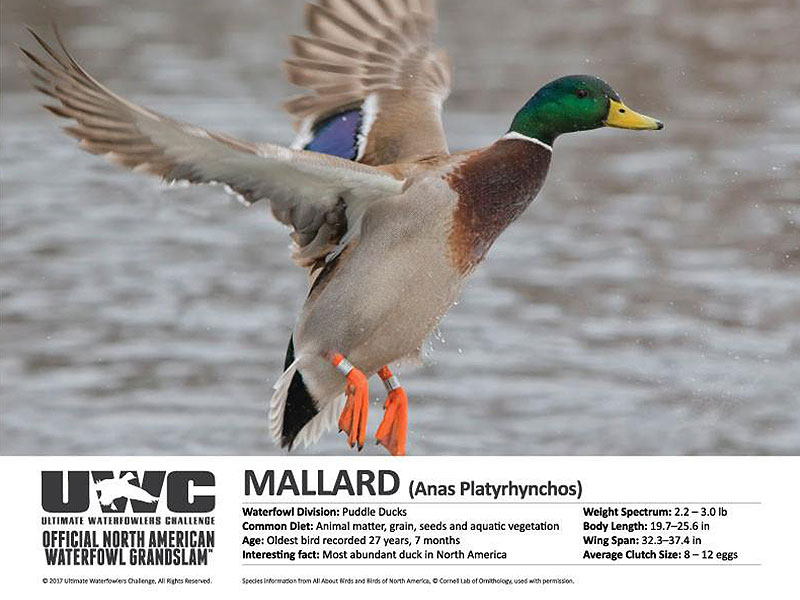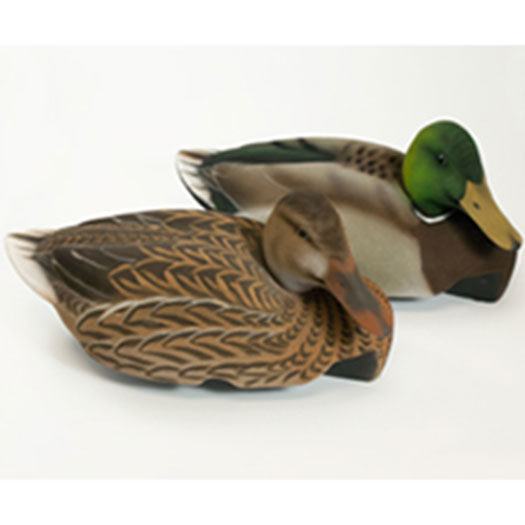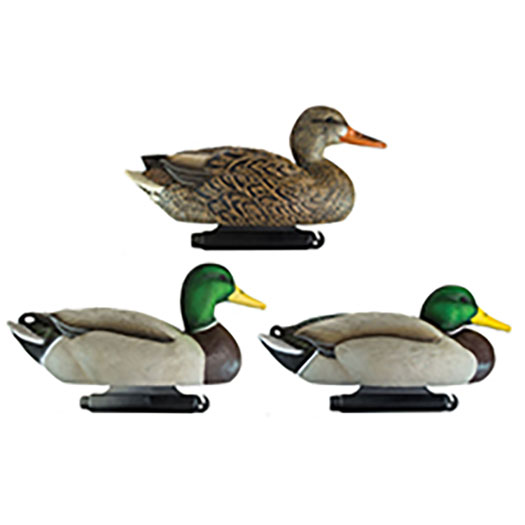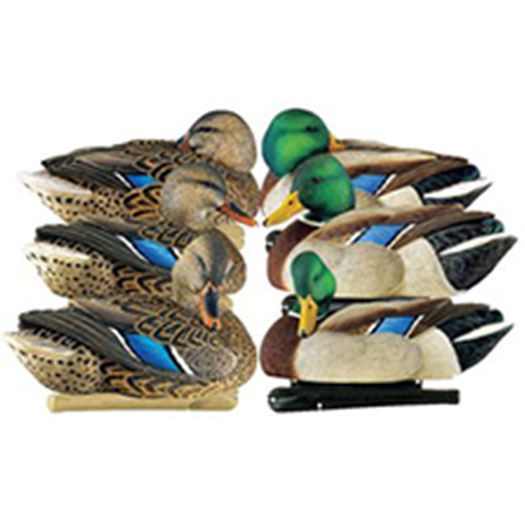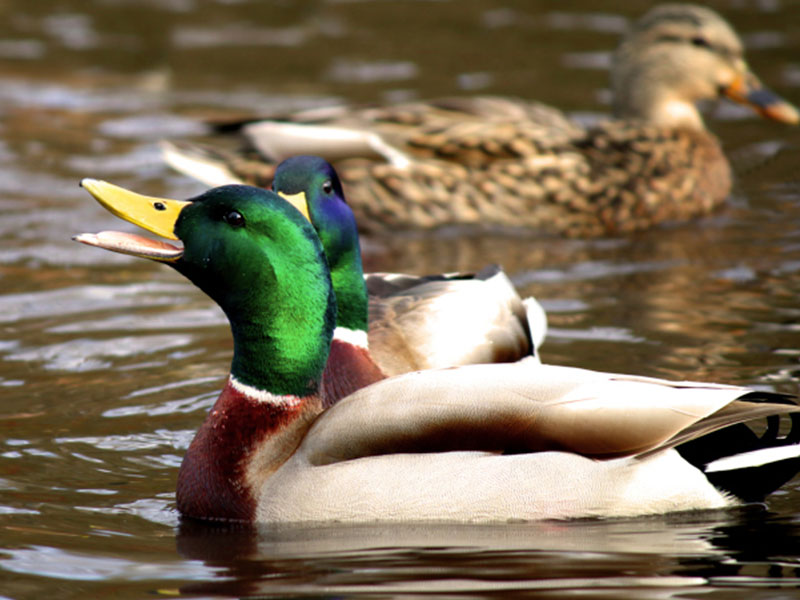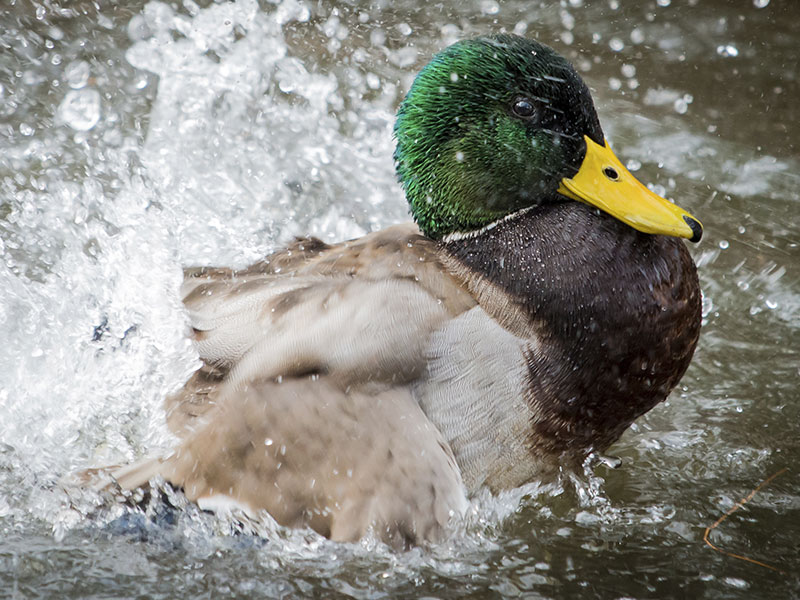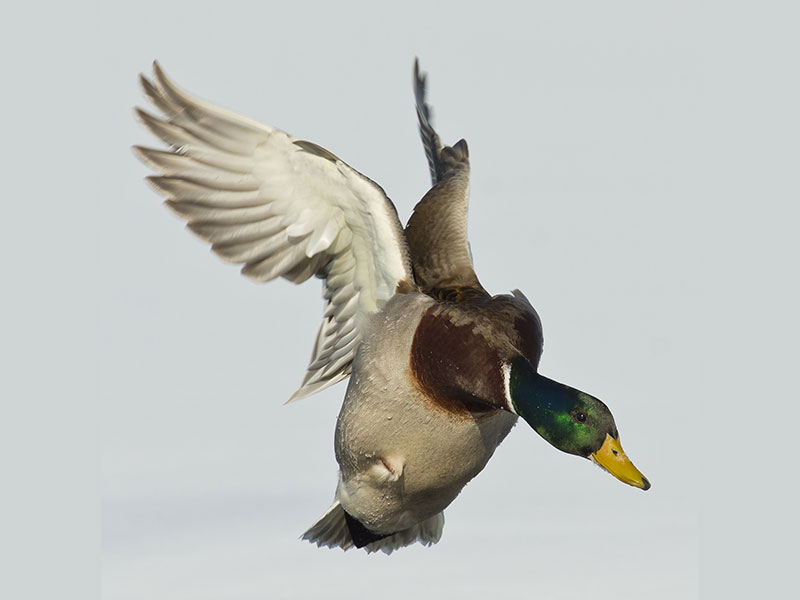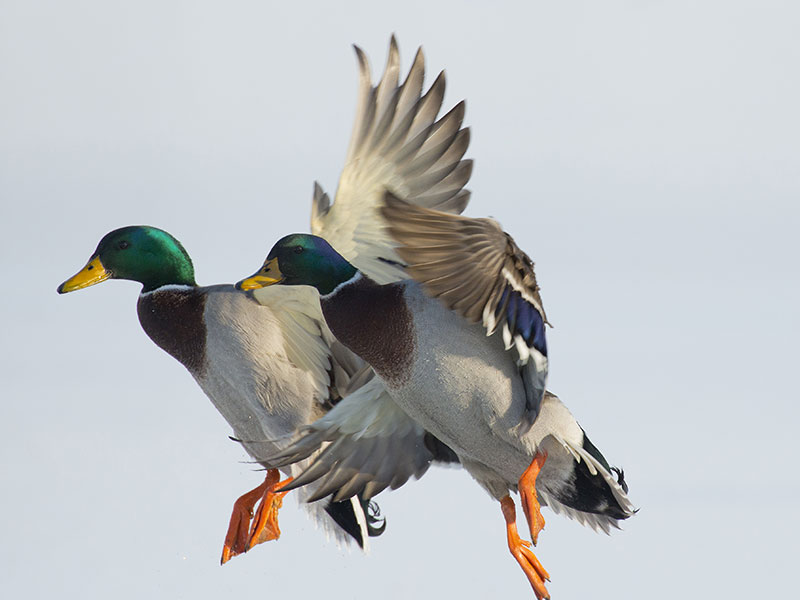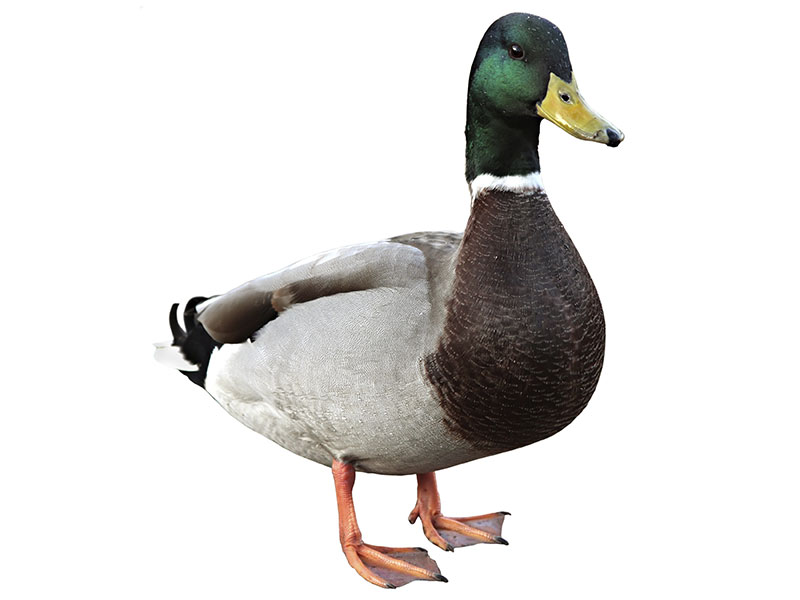Mallard Hunting
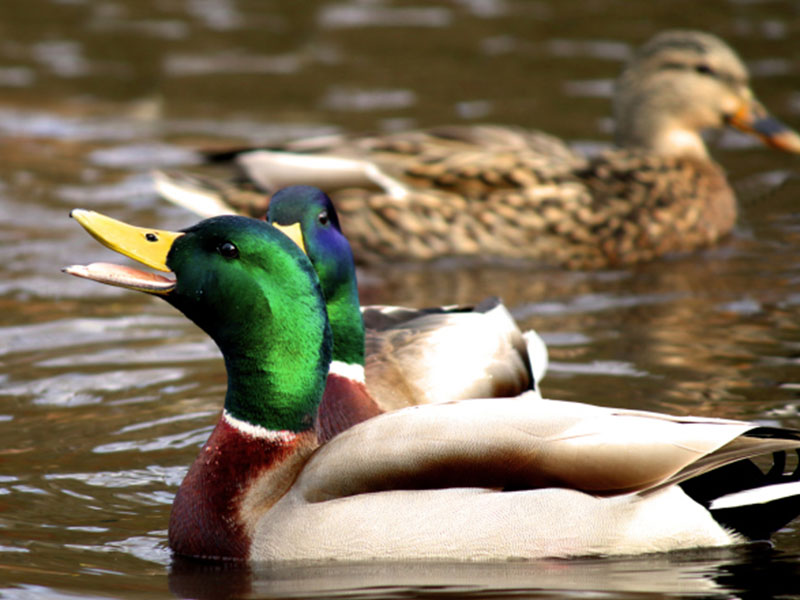
Mallard
Anas platyrhynchos
Lifespan: 3 Years on Avg (Adult)
Higher Classification: Dabbling Duck
Wingspan: 31.9–38.5 in (Adult)
Length: 19.7–25.6 in (Adult)
Weight: M 2.7 lbs, F 2.4 lbs
RELATED NAMES
- Green-Headed Mallard (Drake)
- Greenhead (Drake)
- Susie (Hen)
- Gray Duck (Hen)
- Northern Mallard
LOOKING TO BOOK A WORLD CLASS MALLARD HUNTING ADVENTURE?
DESTINATION #3:
SASKATCHEWAN GEESE & CRANES
Location: Western, saskatchewan
Hunt Package: Click here for pricing
Featured Waterfowl Species: Sandhill cranes, specks, snows, honkers, mallards
Possession Limits: 8 ducks, 8 dark geese, 5 cranes, 20 snows / poss: 3 x’s daily
HUNTING TIPS & TACTICS
Mallard hunting is probably the most popular species of waterfowl hunted across North America. The drakes are commonly referred to as Greenheads and are targeted as one of the top species for table fare and of prowess by serious waterfowl hunters.
Due to the fact that Mallard hunting and the Mallard duck have such an abundant population in every state across the continent, they are available for most every hunter to target across the country. This species of duck has also adapted very well to eating agricultural grain and thus hunting these birds in both water and agricultural field environments have become very popular methods.
Mallards are also a very smart and social bird and are also very hearty birds. As the seasons change, they tend to be one of the last species of waterfowl to migrate south. In fact many hunters wait specifically for the big “Northern Flight” of Mallards to migrate down from Canada each fall.
When Mallard hunting in grain fields, hunters in recent years have evolved into hunting over large spreads of full body mallard decoys and have found using spinning wing decoys to be a very effective method of harvesting these wary birds. However simply placing one or two spinning wing duck decoys in a spread of full body Canada goose decoys can also be an effective method of hunting these birds as well, as long as the hunter has done a good job of scouting and is in a field that the birds have been feeding in recently. Late afternoon hunting for Mallards in the grain fields can be just as effective as morning hunting. Mallards are especially fond of corn and pea fields but will utilize soy bean fields as well.
Mallard hunting over the water is the traditional method of hunting. With a recent boom of custom duck decoys to hitting the market, there are many decoys to choose from. As a rule of thumb, more decoys and higher quality decoys the higher the success rate, especially when hunting large flocks of late season migrating birds.
In the early season, using just a couple dozen hen decoys can also be an effective method, as the drake decoys look a little out of place due to the fact that the birds have not come into full plumage yet. Trying different tactics than what other hunters in the area are doing can be very effective especially when the birds have been hunted hard, later in the hunting season.
UWC MALLARD WATERFOWL POSTER
$17.99
The UWC has put together a beautiful 16″ x 20″ UWC Waterfowl Poster that showcases the Mallard (Anas Platyrhynchos) that inhabits the lands and waters of North America!
The species is listed with the common and scientific name for proper waterfowl identification along with a host of general facts about the bird.
RECOMMENDED DECOYS
UWC OFFICIAL SPECIES LIST

Mallard
Anas platyrhynchos
Lifespan: 3 Years on Avg (Adult)
Higher Classification: Dabbling Duck
Wingspan: 31.9–38.5 in (Adult)
Length: 19.7–25.6 in (Adult)
Weight: M 2.7 lbs, F 2.4 lbs
RELATED NAMES
- Green-Headed Mallard (Drake)
- Greenhead (Drake)
- Susie (Hen)
- Gray Duck (Hen)
- Northern Mallard
LOOKING TO BOOK A WORLD CLASS MALLARD HUNTING ADVENTURE?
DESTINATION #3:
SASKATCHEWAN GEESE & CRANES
Location: Western, saskatchewan
Hunt Package: Click here for pricing
Featured Waterfowl Species: Sandhill cranes, specks, snows, honkers, mallards
Possession Limits: 8 ducks, 8 dark geese, 5 cranes, 20 snows / poss: 3 x’s daily
HUNTING TIPS & TACTICS
Mallard hunting is probably the most popular species of waterfowl hunted across North America. The drakes are commonly referred to as Greenheads and are targeted as one of the top species for table fare and of prowess by serious waterfowl hunters.
Due to the fact that Mallard hunting and the Mallard duck have such an abundant population in every state across the continent, they are available for most every hunter to target across the country. This species of duck has also adapted very well to eating agricultural grain and thus hunting these birds in both water and agricultural field environments have become very popular methods.
Mallards are also a very smart and social bird and are also very hearty birds. As the seasons change, they tend to be one of the last species of waterfowl to migrate south. In fact many hunters wait specifically for the big “Northern Flight” of Mallards to migrate down from Canada each fall.
When Mallard hunting in grain fields, hunters in recent years have evolved into hunting over large spreads of full body mallard decoys and have found using spinning wing decoys to be a very effective method of harvesting these wary birds. However simply placing one or two spinning wing duck decoys in a spread of full body Canada goose decoys can also be an effective method of hunting these birds as well, as long as the hunter has done a good job of scouting and is in a field that the birds have been feeding in recently. Late afternoon hunting for Mallards in the grain fields can be just as effective as morning hunting. Mallards are especially fond of corn and pea fields but will utilize soy bean fields as well.
Mallard hunting over the water is the traditional method of hunting. With a recent boom of custom duck decoys to hitting the market, there are many decoys to choose from. As a rule of thumb, more decoys and higher quality decoys the higher the success rate, especially when hunting large flocks of late season migrating birds.
In the early season, using just a couple dozen hen decoys can also be an effective method, as the drake decoys look a little out of place due to the fact that the birds have not come into full plumage yet. Trying different tactics than what other hunters in the area are doing can be very effective especially when the birds have been hunted hard, later in the hunting season.
UWC MALLARD WATERFOWL POSTER
$17.99
The UWC has put together a beautiful 16″ x 20″ UWC Waterfowl Poster that showcases the Mallard (Anas Platyrhynchos) that inhabits the lands and waters of North America!
The species is listed with the common and scientific name for proper waterfowl identification along with a host of general facts about the bird.

